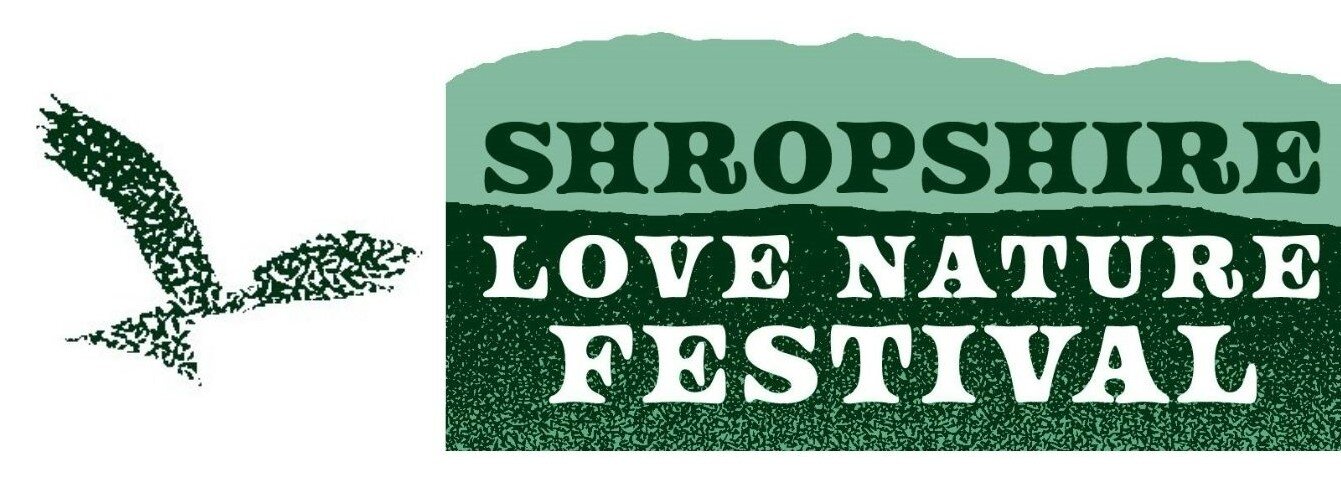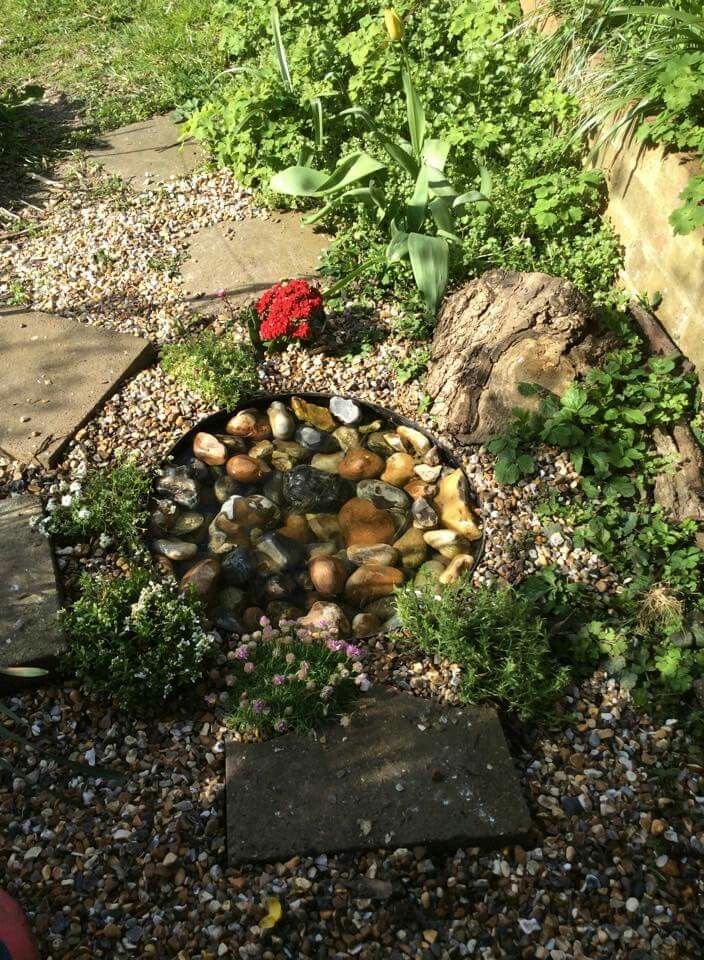Dustbin-lid pond
Happy Midsummer 🌞🌞🌞
Cheap, easy, fun … connects you deeper to nature … upskill yourself … show yourself what you can achieve with mostly recycled, repurposed, stuff … and Go for It 😎 💚💚💚
I’ve got a smallish wildlife pond but for lots of folk even that won’t fit in their garden. Water in the garden makes a huge difference, both for us – who doesn’t like sitting by a pond? – and for the wildlife. And the sound of running water is something just about everyone loves.
To have all this you really don’t need something the size of Chelsea Flower Show, you can do it in a plastic dustbin lid! With a bit of DIY you can even have a wee fountain in your dustbin lid pond and this little floating, solar powered fountain only costs £10. It won’t be as continuous as one connected to the mains but it’ll do the job on a sunny day when you’re likely to want to be out there. And the fountain will move and aerate the water helping to keep it fresh for the birds to drink and bathe in, as well as the plants.
So what do you need?
An old – non-leaking! – plastic dustbin lid. Yes, plastic. The metal ones will rust sooner or later and that will make them turn poisonous to plants and critters and birds – we don’t want that. So plastic does have its uses – the thing with plastic is not to just chuck it away in landfill or – worse – where it can clog rivers or go out to sea, or otherwise harm wildlife.
Most of us can scavenge an old plastic dustbin lid from somewhere and recycle it – there’s another important buzz-word. We really do need to get into the habit of finding secondary and tertiary and more uses fr everything.
Next thing is to dig out a small hole a bit bigger than the lid. Ponds need to be level. The water will level up naturally so if the container isn’t you’ll see lots of it on one side – ugly! – and not get so much water in either. So make your hole 15-20cm bigger all round than the dustbin lid.
Now find some sand. Maybe there’s some lying around from a previous project, maybe a neighbour’s got some, you could even get some from the beach but if you do, wash it thoroughly. Plants, soil and the critters that live there don’t like salt, its poisonous to them. No big deal, a big old tub, spare dustbin you’re not using for a moment, and the hosepipe will sort that. If the worst comes to the worst you can buy a bag of sand from the builders’ merchants, it’ll only be a couple of quid.
Now put some sand in the hole, all the way up the sides, and try your dustbin lid in it. Wiggle it around to get it level. If you don’t have a spirit level then use water – water naturally finds the level so it will show you when you’ve got it right.
The top edges of the dustbin lid should be just slightly below the top of the surrounding soil, it may take a bit of fiddling and testing to get this right but it’s worth it.
Fill the min-pond with water. It’s OK to use chlorinated tap water if you have no rainwater collected but, if you do, leave the water alone so the chlorine evaporates before you go any further. Keeping it topped up is much less of a problem but you may like to organise a rainwater butt from a downpipe on your roof to collect water in future. That’ll help watering the plants too.
So what are you going to put in the mini-pond?
Be very sparing on this! It is tiny, and plants have this strange habit of growing!
No fish! It’s not nearly big enough and you’ll kill them from lack of oxygen if the local heron doesn’t get them first! And anyway, you’ll find lots of little mini-beasts will quickly colonise the new habitat you’ve given them – you’ll get newts, frogs, toads if you’re lucky, dragon and damsel flies, water beetles and water snails, as well as water boatmen and pond skaters.
What Plants?
Yes, you may just be able to have a water lily, a very miniature one, Nymphae Perry’s Baby Red with just about handle a minimum depth of 6ins or 15cm. Check how deep your lid is before you buy.
But there’s plenty of other pretty surface plants to choose from. I love arrowhead, Saggitaria, but you will have to cut it back regularly, it’s good for oxygenating too. Myosotis scorpioides 'Snowflakes', the white water forget-me-not is lovely and delicate, and great for pollinator too. Nymphoides thunbergiana, the yellow water snowflake, is another good one although I prefer the water forget me not. It’s a yellow flower, like a 5-pointed hairy star, very striking; it’s a fast growing floating plant and so you’ll likely need to keep in under control.
Have a look round your local garden centre, see what catches your eye – but always check how deep the water needs to be for it to thrive. And also check if it’s likely to be a thug that you’re always having to pull out.
If you go for that £10 mini fountain you probably won’t want anything in your little pond except pretty pebbles. And again, if you don’t have the mini-pond full of plants the birds will come down to bathe and that’s a glorious sight! They may – or may not appreciate your fountain … think about that before you buy, what do you want? The birds may well use the fountain spout as a perch when it’s not running, and I’ve found some of them enjoy the spray when it is, even prefer the moving water to drink, so don’t necessarily think they won’t like it.
But edge-plants will be invaluable – that’s why I said the edges of the dustbin should be fractionally below the soil edge.
Almost anything will do well around the edge of your pond. Things to think about are …
· What will help birds?
· What do frogs, newts and toads need?
· What will encourage pollinators?
· What do I like to look at?
· Would I like the plants to be scented?
· Where am I going to want to sit to watch?
· What would the children like – if you have them.
And have some big stones, pebble and/or rocks too, these are habitat for mini-beasts, newts, frogs and toads, as well as looking pretty for you.
Birds need perching spots, like stopovers. They tend to fly from one piece of cover to the next, little short bursts, and a sparrow can perch on a stiff grass stem, s/he doesn’t need a whole tree!
So … there’s a bunch of ideas to start you off. One big, important thing … the only rules that apply are …
· will the plants thrive there?
· is it safe for the wildlife?
· do I like it?
Don’t get stuck with “doing it right”, loosen up, experiment, it’ll probably work and if it din’t you’ll have learned something anyway. When we asked why a plant did something unusual my plantsman tutor at Pershore College used to say, “Plant hasn’t read the book!” an excellen maxim to take in gardening … in fact it works a treat in life in general!
You’ll obviously take the necessary care for children but mini-ponds like this are an ace learning place for them, and proved endless fun in watching and discovery. And they’ll have to work fairly hard to drown themselves in a dustbin lid (though not impossible with a bit of effort and thought!) – and that’s another good learning thing for them, how to be safe around water. The sooner they learn that the fewer headaches and panics you’ll have too.
Have a go! Enjoy yourself 😊





